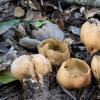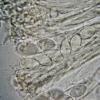
15-12-2025 07:09
 Danny Newman
Danny Newman
indet. Rutstroemiaceae sp. on unk. fallen leavesMc

15-12-2025 21:11
 Hardware Tony
Hardware Tony
Small clavate hairs, negative croziers and IKI bb

15-12-2025 15:54
 Johan Boonefaes
Johan Boonefaes
Unknown anamorph found on the ground in coastal sa

15-12-2025 15:48
 Danny Newman
Danny Newman
Melanospora cf. lagenaria on old, rotting, fallen

15-12-2025 07:05
 Danny Newman
Danny Newman
Pseudosclerococcum golindoi (det: Zotto)near Cosb

15-12-2025 11:49
 Danny Newman
Danny Newman
ITS sequences from the following two collections B

15-12-2025 12:34
 Danny Newman
Danny Newman
indet. Rhytismataceae on oak leafnear Purchase Roa

09-12-2025 12:06
 Andgelo Mombert
Andgelo Mombert
Bonjour,Je recherche l'article concernant Hypobryo
Asco from California, USA
Alan Rockefeller,
03-03-2017 11:58
 What is this? Under Quercus agrifolia in Oakland. Size approx 2 - 3 cm diameter.
What is this? Under Quercus agrifolia in Oakland. Size approx 2 - 3 cm diameter.Spores smooth, inamyloid, 18 × 10 micrometers. Asci inamyloid and with a rounded apex. Micrographs in Meltzer's.
Viktorie Halasu,
03-03-2017 23:21

Re : Asco from California, USA
Hello,
that's an interesting discomycete. That stipe reminds me of Tarzetta, but if the spores really are without guttules, then my best guess is a Geopyxis. If you can check the ascus base, Tarzetta has simple septate base, Geopyxis has forked (pleurorhynchous) base.
Viktorie
that's an interesting discomycete. That stipe reminds me of Tarzetta, but if the spores really are without guttules, then my best guess is a Geopyxis. If you can check the ascus base, Tarzetta has simple septate base, Geopyxis has forked (pleurorhynchous) base.
Viktorie
Nicolas VAN VOOREN,
10-03-2017 00:02

Re : Asco from California, USA
Tarzetta species possess large guttules in their spores.
Consider also the genus Jafnea (especially J. semitosta) because your micrographs show immature ascospores, but the spore shape agrees.
Consider also the genus Jafnea (especially J. semitosta) because your micrographs show immature ascospores, but the spore shape agrees.


